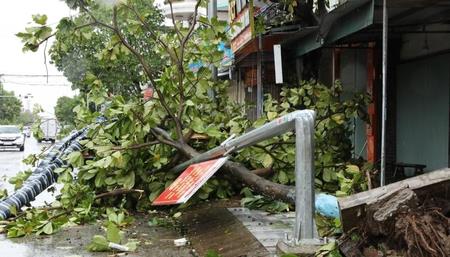Typhoon Bualoi Leaves 19 Dead, 88 Injured In Vietnam
Thirteen people remain missing, while eight others are still out of contact, reports Xinhua, quoting Vietnam News Agency.
More than 105,000 houses were unroofed or damaged, with central Ha Tinh province hardest hit, accounting for over 78,800 of them.
Vietnamese Prime Minister Pham Minh Chinh has instructed local authorities and sectors to take urgent measures to support affected residents and mitigate the aftermath of the typhoon.
PM Chinh also extended his deepest condolences and sympathy to the bereaved families and the Party organisations, administrations, and residents enduring the losses and difficulties caused by the disasters.
He ordered the chairpersons of the People's Committees of Quang Ninh, Hai Phong, Hung Yen, Ninh Binh, Thanh Hoa, Nghe An, Ha Tinh, Quang Tri, Hue, Phu Tho, Son La, Lao Cai, Da Nang, Lang Son, Cao Bang, and Thai Nguyen to mobilise forces and vehicles to access isolated areas as soon as possible, repair damaged houses, arrange shelters for affected residents, and provide them with essential supplies.
He ordered the repair of damaged educational and medical facilities before October 5.
According to the National Centre for Hydro-Meteorological Forecasting, flash floods and landslides are expected to persist for the next two to three days.
Rainfall in several parts of Vietnam had exceeded 300 millimetres over the past 24 hours, the national weather agency said. Heavy rains would continue, including in the capital Hanoi, and strong winds and lightning were also possible, it said.
As of Tuesday, several villages in northern central Vietnam remained flooded with no traffic or power, state media reported.
Bualoi was the second major storm to threaten Asia in a week. Typhoon Ragasa, one of the strongest to hit in years, left at least 28 deaths in the northern Philippines and Taiwan before making landfall in China and dissipating Thursday over Vietnam.
Global warming is making storms like Wipha stronger and wetter, according to experts, since warmer oceans provide tropical storms with more fuel, driving more intense winds, heavier rainfall, and shifting precipitation patterns across East Asia.

Legal Disclaimer:
MENAFN provides the
information “as is” without warranty of any kind. We do not accept
any responsibility or liability for the accuracy, content, images,
videos, licenses, completeness, legality, or reliability of the information
contained in this article. If you have any complaints or copyright
issues related to this article, kindly contact the provider above.
Most popular stories
Market Research

- Cregis Releases 2025 Cryptocurrency Wallet Analysis
- Origin Summit Announces Wave 3: Animation Powerhouse Maggie Kang To Join Programming Lineup
- Falcon Finance Unveils $FF Governance Token In Updated Whitepaper
- Hola Prime Expands Its Platform Ecosystem With Next-Gen Tradelocker
- LYS Labs Moves Beyond Data And Aims To Become The Operating System For Automated Global Finance
- Tradesta Becomes The First Perpetuals Exchange To Launch Equities On Avalanche






















Comments
No comment